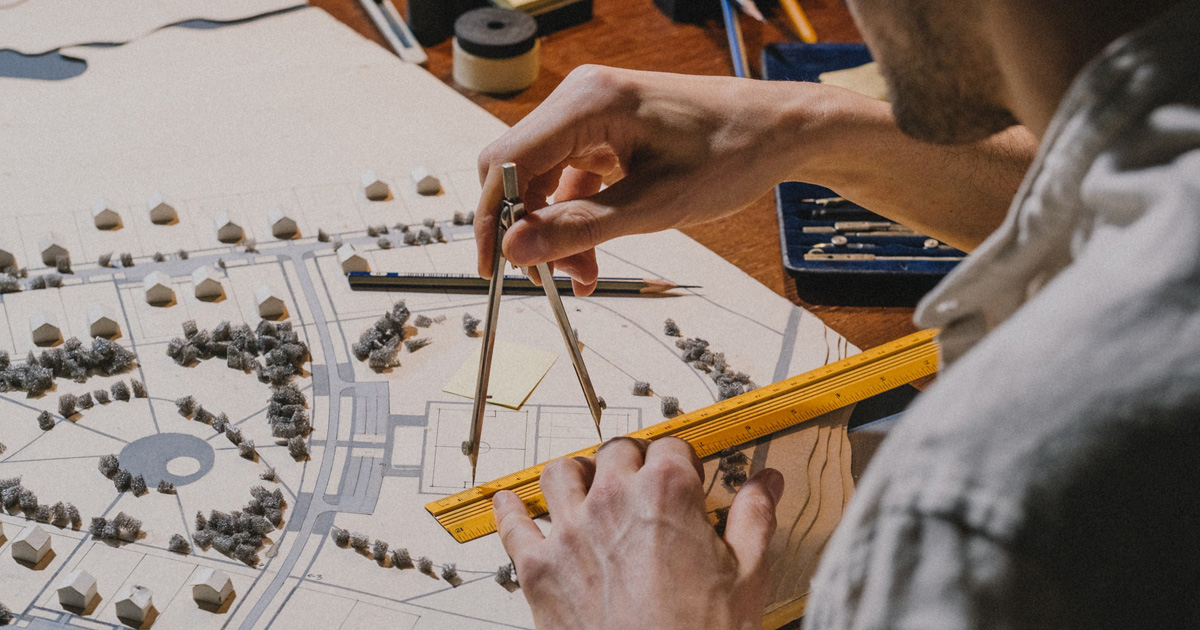Architect Interview Questions You Should Be Prepared to Answer
Architect Interview Questions You Should Be Prepared to Answer
Blog Article
Recognizing the Diverse Profession Paths Available for Aspiring Architect
As an ambitious Architect, you have a world of profession courses waiting for you. Whether you're drawn to traditional style or the subtleties of lasting design, there's a specific niche that straightens with your interests.
Conventional Architecture: Creating Structures and Frameworks
Typical style concentrates on developing buildings and structures that mix functionality with aesthetic appeal. Your designs can mirror cultural heritage, showcasing local traditions while meeting modern demands.
You'll create abilities in composing, model-making, and website analysis, allowing you to imagine and communicate your ideas effectively. Involving with customers, you'll require to recognize their vision and translate it right into viable designs.
Moreover, building codes and sustainability practices are essential in your job, guaranteeing your frameworks are risk-free and eco-friendly. As you expand in your occupation, you'll discover possibilities in residential, business, or also remediation tasks, each offering special difficulties. Embracing typical design leads the way for a fulfilling career that admires the past while forming the future.
Urban Planning: Forming Neighborhoods and Public Spaces
As an aspiring Architect, you can play a necessary duty as an urban planner, transforming exactly how neighborhoods connect and work. By using neighborhood involvement techniques, you'll assure that citizens have a voice in forming their setting. And also, integrating sustainable design principles will aid create areas that not only fulfill today's needs however likewise protect the future.
Role of Urban Planners
While many may consider architects as the single enthusiasts behind structures, metropolitan organizers play an important duty in forming the broader landscape of neighborhoods and public spaces. They examine land use, zoning legislations, and area requires to develop sustainable environments that improve quality of life. By collaborating with numerous stakeholders, you'll aid design parks, transportation systems, and houses that advertise social communication and ease of access. Urban coordinators also concentrate on environmental factors to consider, making sure that growths incorporate eco-friendly rooms and support biodiversity. Your know-how in spatial design and community characteristics allows you to imagine future development while protecting social heritage. In this essential duty, you'll straight affect how people experience their surroundings, making every project a chance for favorable adjustment.
Community Engagement Strategies
Reliable neighborhood involvement approaches are essential for urban planners to ensure that the voices of citizens are heard and valued in the preparation process. To cultivate meaningful discussion, you ought to focus on open forums and workshops where neighborhood participants can express their ideas and issues. Use surveys and social media sites to reach a wider audience, guaranteeing diverse perspectives are consisted of. Working together with neighborhood companies can improve count on and facilitate deeper connections. It is essential to provide clear info concerning decision-making procedures and proposed jobs, allowing citizens to feel informed and encouraged. By actively incorporating and listening comments, you'll create spaces that show the neighborhood's requirements, inevitably causing even more lasting and successful city atmospheres. Embrace transparency and constant discussion for enduring influence.
Lasting Style Principles
When making city rooms, incorporating sustainable layout concepts is critical for producing atmospheres that thrive both ecologically and socially. Take into consideration incorporating environment-friendly spaces, like parks and yards, to improve biodiversity and boost air quality.
Designing with water conservation in mind is also essential-- assume about rainfall yards and permeable surface areas to manage stormwater. Including neighborhood participants throughout the planning process assurances that the rooms you develop satisfy their requirements and encourage social interaction. By accepting these concepts, you'll add to dynamic, lasting metropolitan landscapes that profit everybody.

Landscape Style: Creating Sustainable Outside Settings
As you discover landscape design, you'll find essential design concepts that create functional and gorgeous outside spaces. Lasting techniques play a crucial function in guaranteeing these environments prosper while lessening ecological influence. And also, you'll find a range of occupation possibilities that enable you to make a real distinction in just how individuals engage with nature.
Design Concepts in Landscape
Comprehending design concepts in landscape architecture is necessary for developing sustainable outside environments that integrate with nature. You'll require to contemplate elements like equilibrium, range, and percentage to ensure your designs feel natural and welcoming. Integrating indigenous plants not only improves biodiversity however additionally minimizes water use, making your landscape resilient. Consider the flow of area and just how individuals engage with it; paths and seating locations ought to invite expedition and leisure. Furthermore, take note of seasonal modifications, making with materials that match the surroundings year-round (Architect). By prioritizing sustainability and aesthetics, you can create outdoor spaces that enrich the neighborhood and promote well-being. Welcoming these principles will certainly establish a solid structure for your job in landscape architecture.
Sustainable Practices Overview
Lasting techniques in landscape design not only concentrate on visual appeals however additionally prioritize environmental health and wellness and resource conservation. By incorporating native plants, you boost biodiversity and decrease the need for chemical plant foods and chemicals. Implementing effective irrigation systems helps save water and minimizes drainage, securing close-by ecological communities. You can develop areas that promote dirt wellness, such as utilizing natural products and practicing permaculture principles. Furthermore, integrating eco-friendly infrastructure, like rain yards and porous pavements, help in stormwater administration and decreases metropolitan warmth. You add to a healthier world and offer areas that foster neighborhood connection when you develop outside settings with sustainability in mind. Inevitably, these methods assure your designs profit both people and the environment for several years to find.
Job Opportunities Expedition
With a strong foundation in lasting techniques, landscape style uses a variety of career courses that permit you to make a meaningful influence on the setting. Urban coordinators commonly team up with landscape designers to create environment-friendly areas in city settings, improving city livability. If you're passionate concerning education, take into consideration ending up being a landscape architecture educator, inspiring future generations.
Sustainable Design: Concentrating On Eco-Friendly Practices
As you explore useful site your job in architecture, welcoming environment-friendly practices can set you apart in an affordable field. Lasting design concentrates on developing structures that minimize ecological influence while improving owner wellness. By incorporating eco-friendly materials, energy-efficient systems, and sustainable structure methods, you'll add to a greener future.
Begin by obtaining understanding of environment-friendly accreditations like LEED or BREEAM, which can bolster your qualifications. Take into consideration how natural light, air flow, and thermal performance can optimize style. Work together with designers and ecological specialists to innovate solutions that decrease waste and save sources.
Do not neglect the significance of community participation-- engaging local stakeholders can influence styles that balance with the setting. As customers significantly focus on sustainability, your know-how in eco-friendly practices will not only attract projects but additionally satisfy your enthusiasm for accountable design. Accept this vital element of the career, and enjoy your job prosper.
Historical Conservation: Protecting and Restoring Cultural Heritage
While you commence on your architectural trip, consider the important role of historic preservation in keeping our social heritage. This area focuses on the security and repair of significant structures, websites, and structures that tell the tales of our past. By participating in historical preservation, you'll help safeguard the building legacy that shapes community identification.
As a historic preservation Architect, you'll analyze historical significance and analyze the condition of frameworks. You'll function closely with conservationists and chroniclers to assure genuine remediation strategies are utilized. This job path enables you to blend creative thinking with research, allowing Visit Website you to design remedies that respect initial materials and craftsmanship.
Your job not only adds to sustainability by reusing existing structures but likewise fosters a sense of satisfaction within communities. Accepting this path will aid you become a guardian of history, maintaining the tales and visual appeals that improve our lives.
Interior Design: Enhancing Indoor Spaces
Historical conservation and interior style both share a dedication to enhancing the developed setting, but they concentrate on various elements. While historical preservation emphasizes preserving a framework's historical and social value, indoor architecture zeroes in on enhancing interior rooms for performance and appearances.
As an aspiring Architect, you'll discover that interior design permits you to mix creativity with technical skills. You'll develop areas that not only look excellent but also promote comfort and effectiveness. This field entails recognizing how light, color, and materials engage within a room, influencing state of mind and usability.
You'll work with various projects, from domestic homes to industrial offices, guaranteeing that each atmosphere satisfies the requirements of its passengers. By focusing on individual experience, you can transform interiors right into useful and motivating areas, making a considerable effect on how individuals interact with their environments. Welcome the chance to improve interior atmospheres and shape the way individuals live and function.
Industrial Style: Combining Functionality With Aesthetic Appeals
Industrial design plays an essential duty in producing items that flawlessly mix aesthetic appeals with performance, making sure that what you utilize everyday is not only visually appealing however also sensible. As a hopeful Architect, you could immerse on your own in this field, concentrating on creating whatever from furnishings to customer electronics. Your job involves understanding user needs, products, and making procedures, allowing you to produce innovative remedies that enhance day-to-day experiences.
In industrial layout, you'll usually team up with marketing experts, engineers, and suppliers, making certain that your designs are not only stunning yet also practical. You'll find out to stabilize form and function, focusing on use without giving up style. By developing your abilities in sketching, 3D modeling, and prototyping, you'll be fully equipped to bring your concepts to life. This job path supplies a dynamic atmosphere where creative thinking meets practicality, making it a gratifying option for architects interested in shaping the products of tomorrow.
Frequently Asked Inquiries
What Educational Accreditations Do I Required to Come To Be a Designer?
To become an architect, you'll require an expert level in style, normally a Bachelor's or Master's. In addition, you'll have to finish a teaching fellowship and pass the Architect Registration Evaluation to practice legally.
Exist Accreditation Requirements for Different Building Job Paths?
Yes, there're accreditation requirements for numerous building courses. Architect. You'll need to pass tests, total teaching fellowships, and often seek specialized training, depending upon your chosen focus, like landscape style, metropolitan layout, or historic conservation
What Software Program Skills Are Essential for Designers Today?

Exactly How Can I Gain Practical Experience While Studying Style?
You can acquire practical experience by interning at building firms, taking part in style competitions, volunteering for community tasks, or working together with classmates on real-world tasks. These opportunities boost your skills and develop important links in the market.
What Work Opportunities Exist Outside Typical Architecture Firms?
You can discover various work opportunities outside standard architecture firms, like city planning, interior decoration, landscape architecture, building and construction management, property growth, and even functions in sustainability consulting. Each deals special challenges and rewards.
Whether you're drawn to standard style or the nuances of sustainable layout, there's a niche that lines up with your rate of interests.When designing metropolitan rooms, incorporating sustainable style concepts is crucial for producing atmospheres click over here now that flourish both environmentally and socially.As you discover landscape architecture, you'll discover vital design principles that produce attractive and functional outside areas.Recognizing design principles in landscape architecture is vital for producing sustainable outdoor settings that harmonize with nature.In industrial design, you'll typically work together with marketing professionals, manufacturers, and engineers, ensuring that your layouts are not just attractive yet additionally viable.
Report this page